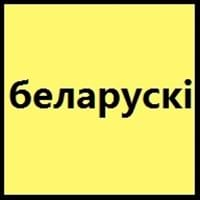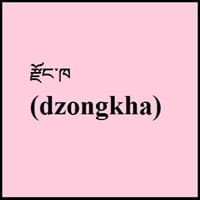Belarusian and Dzongkha
Countries
Belarus, Poland
Bhutan
National Language
Belarus, Gambia
Bhutan
Second Language
Poland
India
Speaking Continents
Asia
Asia
Minority Language
Czech Republic, Lithuania, Ukraine
India
Regulated By
National Academy of Sciences of Belarus, National Languages Committee
Dzongkha Development Commission
Interesting Facts
- Since 1918, Belarusian has been the official language of Belarus.
- Belarusian include many loanwords from Polish language.
- Standard romanization of the Dzongkha language is Roman Dzongkha.
Similar To
Russian and Ukrainian
Sikkimese Language
Derived From
Not Available
Tibetan Language
Alphabets in
Belarusian-Alphabets.jpg#200
Dzongkha-Alphabets.jpg#200
Scripts
Cyrillic
Dzongkha Braille, Tibetan Braille
Writing Direction
Not Available
Not Available
Hello
dobry dzień
Kuzoozangpo La
Thank You
Dziakuj
Kaadinchhey La
How Are You?
Jak vy ?
Ga Day Bay Zhu Yoe Ga ?
Good Night
Dabranač
lek shom ay zim
Good Evening
Dobry viečar
Not Available
Good Afternoon
dobry dzień
Not Available
Good Morning
Dobraj ranicy
Not Available
Please
Kali laska
Not Available
Sorry
Vybačajcie
Tsip maza
Bye
da pabačennia
Log Jay Gay
I Love You
JA liubliu ciabie
Nga cheu lu ga
Excuse Me
Vybačajcie
Tsip maza
Dialect 1
North-Eastern Belarusian
Laya
Where They Speak
North-East Belarus
Bhutan
How Many People Speak
Not Available
Dialect 2
South-Western Belarusian
Lunana
Where They Speak
South-West Belarus
Bhutan
How Many People Speak
Not Available
Dialect 3
Middle Belarusian
Adap
Where They Speak
Middle Belarus
Bhutan
Total No. Of Dialects
Not Available
Speaking Population
Not Available
Native Name
Беларуская мова (Bielaruskaja mova)
རྫོང་ཁ (dzongkha)
Alternative Names
Belarusan, Belorussian, Bielorussian, Byelorussian, White Russian, White Ruthenian
Bhotia of Bhutan, Bhotia of Dukpa, Bhutanese, Drukha, Drukke, Dukpa, Jonkha, Rdzongkha, Zongkhar
French Name
biélorusse
dzongkha
German Name
Weißrussisch
Dzongkha
Pronunciation
Not Available
Not available
Ethnicity
Belarusians
Ngalop people
Origin
18th century
17th Century
Language Family
Indo-European Family
Sino-Tibetan Family
Subgroup
Slavic
Not Available
Branch
Eastern
Tibeto-Burman
Early Forms
Old East Slavic
No early forms
Standard Forms
Belarusian
Dzongkha
Language Position
Not Available
Signed Forms
Not Available
Not Available
Scope
Individual
Individual
ISO 639 6
Not Available
Not Available
Glottocode
bela1254
nucl1307
Linguasphere
53-AAA-eb < 53-AAA-e (varieties: 53-AAA-eba to 53-AAA-ebg)
No data Available
Language Type
Living
Living
Language Linguistic Typology
Not Available
Not Available
Language Morphological Typology
Not Available
Not Available
All Belarusian and Dzongkha Dialects
Most languages have dialects where each dialect differ from other dialect with respect to grammar and vocabulary. Here you will get to know all Belarusian and Dzongkha dialects. Various dialects of Belarusian and Dzongkha language differ in their pronunciations and words. Dialects of Belarusian are spoken in different Belarusian Speaking Countries whereas Dzongkha Dialects are spoken in different Dzongkha speaking countries. Also the number of people speaking Belarusian vs Dzongkha Dialects varies from few thousands to many millions. Some of the Belarusian dialects include: North-Eastern Belarusian, South-Western Belarusian. Dzongkha dialects include: Laya , Lunana. Also learn about dialects in South American Languages and North American Languages.
Belarusian and Dzongkha Speaking population
Belarusian and Dzongkha speaking population is one of the factors based on which Belarusian and Dzongkha languages can be compared. The total count of Belarusian and Dzongkha Speaking population in percentage is also given. The percentage of people speaking Belarusian language is 0.11 % whereas the percentage of people speaking Dzongkha language is Not Available. When we compare the speaking population of any two languages we get to know which of two languages is more popular. Find more details about how many people speak Belarusian and Dzongkha on Belarusian vs Dzongkha where you will get native speakers, speaking population in percentage and native names.
Belarusian and Dzongkha Language Codes
Belarusian and Dzongkha language codes are used in those applications where using language names are tedious. Belarusian and Dzongkha Language Codes include all the international language codes, glottocodes and linguasphere.





